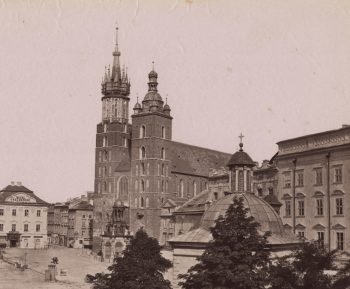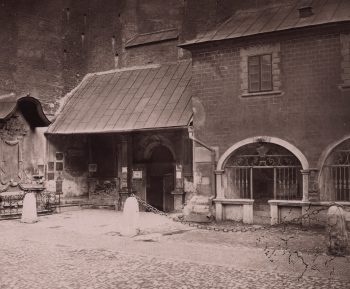After the Wawel Cathedral, St. Mary’s Basilica is the most important church in Kraków.
The construction of St. Mary’s Basilica was started in late 13th century on the foundations of a former Romanesque church. The new temple St. Mary’s was consecrated around the year 1320. Over the centuries, the church underwent numerous reconstructions of both its exterior and interior.

The extended single-aisle presbytery under a stellar vault was built in late 14th century. The light comes inside through the high stained glass windows. Only three windows have been preserved from the original medieval stained glass. The rest is from the 19th century and was created by individuals such as Stanisław Wyspiański and Józef Mehoffer.

In the 16th century, stalls under canopies were set up on both sides the presbytery, which was equipped with backboards with images from the lives of Jesus Christ and the Virgin Mary in the following century.

The years 1477–1489 brought the main altar to the church. It was sculpted by Veit Stoss and is considered a late Gothic masterpiece.

In late 14th century, the church assumed the form of a Basilica with the main aisle taller than the side aisles and the body under a rib vault.

The 18th century saw the church equipped with Baroque aesthetics. The work was supervised by Francesco Placidi, who created the Baroque galilee leading to the church in mid-18th century. The multisided architectural form crowned with an openwork tower imitates the Church of the Holy Sepulchre in Jerusalem. The wooden door of the galilee is decorated with sculpted heads of prophets, apostles, and Polish saints, which were created in 1929 by Karol Hukan.
The church cemetery was deconstructed in early 19th century and its former grounds are now known as St. Mary’s Square.

In late 19th century, Tadeusz Stryjeński headed extensive restoration of the temple. At that time, the church acquired new painted decorations designed by Jan Matejko and created by Stanisław Wyspiański, Józef Mehoffer, and others. The vault imitates a star-filled sky and the walls are covered by paintings with ornamental and heraldic themes, prayers to St. Mary, and images of angels playing instruments or holding banderols with the Litany of the Blessed Virgin Mary.













